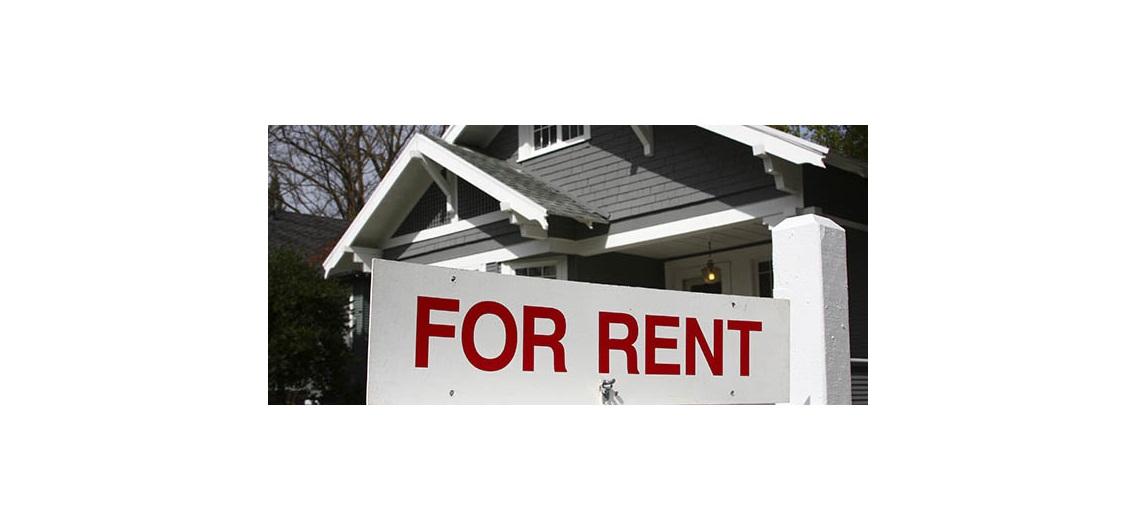
Calgary's trusted source of real estate news, advice and statistics since 1983.
Stories Tagged - Calgary Real Estate News
News
Aug. 13, 2015 | CREBNow
Q&A with real estate's top boss
CREB®Now sits down with Canadian Real Estate Association president
Pauline Aunger is no stranger to Canada's real estate market. As president of the Canadian Real Estate Association (CREA), she has a unique behind-the-curtains perspective of the industry – from its performance to advocacy efforts.
CREB®Now recently sat down with Aunger, who was in Calgary recently as part of CREA's cross-country open house series with local real estate boards. Here's what she had to say about everything from insurance premiums to how Calgary factors into her bucket list.
Pauline Aunger is no stranger to Canada's real estate market. As president of the Canadian Real Estate Association (CREA), she has a unique behind-the-curtains perspective of the industry – from its performance to advocacy efforts.
CREB®Now recently sat down with Aunger, who was in Calgary recently as part of CREA's cross-country open house series with local real estate boards. Here's what she had to say about everything from insurance premiums to how Calgary factors into her bucket list.
News
Aug. 13, 2015 | Cody Stuart
A city all its own
Airdrie continues to step out from the shadow of its neighbours
Airdrie has come a long way from its roots along the tracks of the Calgary Edmonton Railway.
Located almost literally in the shadow of Calgary, Airdrie's rise from sleepy railway stop to full-fledged city is reflected in the number of people who choose to call the community home.
Rising from just over 12,000 residents in 1991 to 58,690 in the recently released 2015 census, Airdrie is now Alberta's seventh largest city, ranking ahead of such centres as Leduc and Grande Prairie.
Airdrie's population grew by 3,799 or 10.4 new residents per day, versus 5,331 total or 15 new residents per day last year – a growth rate of 6.92 per cent growth rate, compared to 10.76 per cent last year.
Airdrie has come a long way from its roots along the tracks of the Calgary Edmonton Railway.
Located almost literally in the shadow of Calgary, Airdrie's rise from sleepy railway stop to full-fledged city is reflected in the number of people who choose to call the community home.
Rising from just over 12,000 residents in 1991 to 58,690 in the recently released 2015 census, Airdrie is now Alberta's seventh largest city, ranking ahead of such centres as Leduc and Grande Prairie.
Airdrie's population grew by 3,799 or 10.4 new residents per day, versus 5,331 total or 15 new residents per day last year – a growth rate of 6.92 per cent growth rate, compared to 10.76 per cent last year.
News
Aug. 12, 2015 | CREBNow
Q&A with CMHC's Richard Cho
As Canada Mortgage and Housing Corp.'s market analyst for Calgary, Richard Cho is tasked with keeping tabs on the housing market in one of Canada's most dynamic cities.
CREB®Now caught up with Cho to talk about the economy, what's in store for Calgary's real estate sector and why he enjoys calling the city home.
CREB®Now: ?How are current energy prices affecting the city of Calgary?
CHO: A large part of Calgary's economy is tied to the performance of the energy industry. The decline in oil prices has posed some challenges for many oil companies, resulting in reductions to capital expenditures, hiring freezes, and layoffs. This has also impacted many other industries, from large companies to small business owners, that either directly or indirectly benefit from the energy sector. While there are still areas of Calgary's economy that are holding steady and creating jobs, overall economic activity is expected to slow down this year.
CREB®Now caught up with Cho to talk about the economy, what's in store for Calgary's real estate sector and why he enjoys calling the city home.
CREB®Now: ?How are current energy prices affecting the city of Calgary?
CHO: A large part of Calgary's economy is tied to the performance of the energy industry. The decline in oil prices has posed some challenges for many oil companies, resulting in reductions to capital expenditures, hiring freezes, and layoffs. This has also impacted many other industries, from large companies to small business owners, that either directly or indirectly benefit from the energy sector. While there are still areas of Calgary's economy that are holding steady and creating jobs, overall economic activity is expected to slow down this year.
News
Aug. 11, 2015 | Joel Schlesinger
Car-less and carefree in Calgary
In a city renowned for its freeways and sprawling suburbs, more residents are choosing to live closer to its centre — and even forgoing hopping behind the wheel altogether
Who needs to own a car? Not Jennifer Lee.
The 21-year-old moved to Calgary two years ago to study and work in the city's burgeoning IT sector. And like a growing number of millennials, she doesn't own a car and has no plans to own one soon.
While that may not sound altogether revolutionary, Lee represents a wave of change in a city renowned for its multi-lane freeways, suburban sprawl and increasingly congested roadways.
Who needs to own a car? Not Jennifer Lee.
The 21-year-old moved to Calgary two years ago to study and work in the city's burgeoning IT sector. And like a growing number of millennials, she doesn't own a car and has no plans to own one soon.
While that may not sound altogether revolutionary, Lee represents a wave of change in a city renowned for its multi-lane freeways, suburban sprawl and increasingly congested roadways.
News
Aug. 10, 2015 | Donna Balzer
Automate your H²0
Don't forget to breathe ... and water
It's summer and fields of waving wheat make you smile as you bike down the Cowboy Trail south of Cochrane. You love this image so much you seriously consider selling your condo in the city and buying a farm.
As you arrive home later in the day reality hits. Your plants have wilted in their hot, black pots on the patio. Superbells lay limp and are probably dead. Petunias wilt. Snapdragons droop. Maybe you can't buy the farm until someone starts watering for you in town.
It's summer and fields of waving wheat make you smile as you bike down the Cowboy Trail south of Cochrane. You love this image so much you seriously consider selling your condo in the city and buying a farm.
As you arrive home later in the day reality hits. Your plants have wilted in their hot, black pots on the patio. Superbells lay limp and are probably dead. Petunias wilt. Snapdragons droop. Maybe you can't buy the farm until someone starts watering for you in town.
News
Aug. 10, 2015 | Cara Casey
Make your yard bird and nature-friendly
Developing urban ecosystems in our own yards
When thinking about preserving complex ecosystems, many people think of our provincial parks and large-scale grasslands. However, with the total urban land in Canada doubling in the last 40 years, it's impossible to ignore the native species that fill the patchwork of green spaces that are our yards.
Birds, in particular, are not only losing their natural habitats faster than you can say "tweet," but are also being eliminated in massive amounts by their number one predator — house cats.
"As far as habitat in Calgary for many of our local bird species, it just doesn't exist anymore or it's really degraded," said Barbara Kowalzik, a program advisor with The City of Calgary Parks Department at the Inglewood Bird Sanctuary and Nature Centre.
"A good example is our wetlands. Over 98 per cent of our wetlands have been lost or degraded so that habitat just doesn't exist. Whatever the citizens of Calgary can do in their own yards to promote that local habitat, will really help."
When thinking about preserving complex ecosystems, many people think of our provincial parks and large-scale grasslands. However, with the total urban land in Canada doubling in the last 40 years, it's impossible to ignore the native species that fill the patchwork of green spaces that are our yards.
Birds, in particular, are not only losing their natural habitats faster than you can say "tweet," but are also being eliminated in massive amounts by their number one predator — house cats.
"As far as habitat in Calgary for many of our local bird species, it just doesn't exist anymore or it's really degraded," said Barbara Kowalzik, a program advisor with The City of Calgary Parks Department at the Inglewood Bird Sanctuary and Nature Centre.
"A good example is our wetlands. Over 98 per cent of our wetlands have been lost or degraded so that habitat just doesn't exist. Whatever the citizens of Calgary can do in their own yards to promote that local habitat, will really help."
News
Aug. 07, 2015 | Cody Stuart
Suite shift
CMHC change will allow buyers to use more rental revenue as qualifying income
A rule change from Canada's Crown housing corporation may provide more fuel for Calgary's long-running debate on secondary suites.
Set to take effect Sept. 28, the change will allow homeowners to count 100 per cent of rental income from legal secondary suites as qualifying income applying for a mortgage.
Up from the current level of 50 per cent, Canada Mortgage and Housing Corp. said the changes were made after a review of the corporation's policy for treatment of rental income.
"It appears as though CMHC is making these changes to assist with affordable housing," said Nolan Matthias, broker at Calgary's Mortgage360.
A rule change from Canada's Crown housing corporation may provide more fuel for Calgary's long-running debate on secondary suites.
Set to take effect Sept. 28, the change will allow homeowners to count 100 per cent of rental income from legal secondary suites as qualifying income applying for a mortgage.
Up from the current level of 50 per cent, Canada Mortgage and Housing Corp. said the changes were made after a review of the corporation's policy for treatment of rental income.
"It appears as though CMHC is making these changes to assist with affordable housing," said Nolan Matthias, broker at Calgary's Mortgage360.
News
Aug. 06, 2015 | Shelley Boettcher
Migration to moderate
Housing demand expected to weaken
Mike Dunn moved to Calgary from Edmonton in July. He'd been thinking for a while about relocating, but when a friend offered him an affordable place to stay, he decided to take the plunge.
"It was like walking into a hurricane, to land here during Stampede, but it was good," he said with a laugh. "It seems like a place where if you work hard, you can pull off a decent living."
Dunn's not the first to switch area codes – and he won't be the last.
But he does represent a smaller number, as net migration — the difference between the number of people who have moved to Calgary, compared to the number who have moved away from the city — is at its lowest since 2011.
Mike Dunn moved to Calgary from Edmonton in July. He'd been thinking for a while about relocating, but when a friend offered him an affordable place to stay, he decided to take the plunge.
"It was like walking into a hurricane, to land here during Stampede, but it was good," he said with a laugh. "It seems like a place where if you work hard, you can pull off a decent living."
Dunn's not the first to switch area codes – and he won't be the last.
But he does represent a smaller number, as net migration — the difference between the number of people who have moved to Calgary, compared to the number who have moved away from the city — is at its lowest since 2011.
News
Aug. 04, 2015 | Alex Frazer Harrison
Rosy picture for rentals
Several factors contributing to more favourable conditions
Calgary's rental market is emerging as an early winner this year as the result of improved vacancy rates, added inventory and a more conservative appetite among buyers in the resale housing sector.
CREB®'s mid-year forecast update, released earlier this week, notes more choice and less upward pressure on rents has, and will continue to, impact the resale market as more consumers choose to keep renting.
An April report from the Canadian Mortgage and Housing Corp. (CMHC) showed two-bedroom apartment and row vacancy rates rose to 3.6 per cent in 2015 – the highest level since 2010 – from 1.5 per cent the year prior.
Calgary's rental market is emerging as an early winner this year as the result of improved vacancy rates, added inventory and a more conservative appetite among buyers in the resale housing sector.
CREB®'s mid-year forecast update, released earlier this week, notes more choice and less upward pressure on rents has, and will continue to, impact the resale market as more consumers choose to keep renting.
An April report from the Canadian Mortgage and Housing Corp. (CMHC) showed two-bedroom apartment and row vacancy rates rose to 3.6 per cent in 2015 – the highest level since 2010 – from 1.5 per cent the year prior.
News
Aug. 01, 2015 | Joel Schlesinger
Bursting the bubble on overvaluation
Several reports have sounded the alarm our real estate market is grossly overvalued, but industry watchers contend Calgary isn't poised for the big crash some are forecasting
Reports suggesting Calgary's housing market is over-valued, supported by recent price corrections, are missing many of the obvious indicators saying otherwise, say experts.
The metrics used to measure affordability simply do not back up the argument that Calgary's real estate market is highly overvalued and ready for a precipitous drop in home values, said Robert Kavcic, a senior economist with Economic Research BMO Capital Markets in Toronto.
"One of the (metrics) we look at is the average mortgage payment as a share of income, and right now that's a little bit above the long-run norm of 27 per cent at about 29 per cent," he said.
Reports suggesting Calgary's housing market is over-valued, supported by recent price corrections, are missing many of the obvious indicators saying otherwise, say experts.
The metrics used to measure affordability simply do not back up the argument that Calgary's real estate market is highly overvalued and ready for a precipitous drop in home values, said Robert Kavcic, a senior economist with Economic Research BMO Capital Markets in Toronto.
"One of the (metrics) we look at is the average mortgage payment as a share of income, and right now that's a little bit above the long-run norm of 27 per cent at about 29 per cent," he said.












